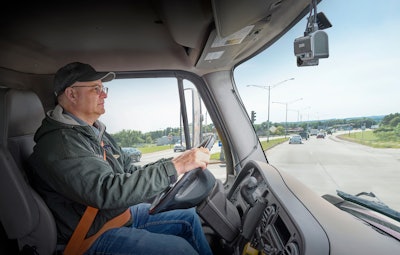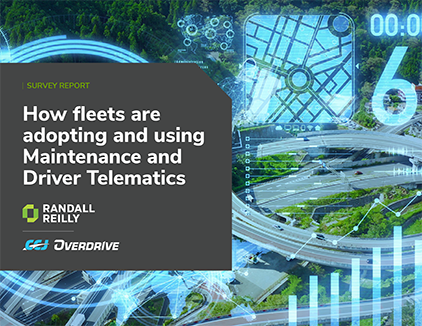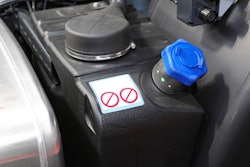
Driver-facing cameras have always been a controversial topic with drivers. Vendors and some carriers say these cameras are an important safety measure, helping improve training and coaching to reduce accidents. But while company drivers and owner-operators stand by road-facing cameras for their ability to exonerate them in the event of an accident that wasn’t their fault, they’re pretty staunch on their feelings for in-cab-facing cameras: they don’t like them.
According to Overdrive’s recent State of Surveillance survey, drivers ranked in-cab-facing video cameras a two out of 10 (one equals not beneficial at all). Based on their experience with each technology, smartphones ranked the most beneficial at 8.9, followed by road-facing cameras at 8.0. A basic cellphone even ranked above driver-facing cameras as a more beneficial technology. According to an American Transportation Research Institute report titled Issues and Opportunities with Driver-Facing Cameras, released back in April, driver approval of driver-facing cameras tends to be low – just 2.24 on a 0-to-10 scale among 650 users from across the industry. Strong concerns about privacy led to the low score.

How are fleets and owner-operators using telematics? Find out with this comprehensive research from the editors at CCJ.
Download to access insights on what telematics solutions fleets/owner-operators are using, how telematics influences business decisions and more.
I write about driver-facing cameras, among other technologies, for a living. I’ve spoken with the experts, and I’ve heard from the drivers and fleet managers. In a recent call with multiple carrier representatives, I heard one firmly express his distaste for driver-facing cameras, while another said his fleet implemented them even if it meant losing a couple of drivers.
It’s a divisive topic.
Different vendors offer different bells and whistles on their driver cams. I’ve seen them in action at user conferences and trade shows. The camera picks up on eye movement to detect drowsiness or distractions; the system can recognize cellphone usage, for example, and instruct the driver to put it down and more. It’s really cool technology.
Vendors argue that artificial intelligence provides a layer of privacy, but I can’t imagine that eases drivers’ minds.
I’ve heard fleet managers on panels discussing the topic that the key is to show drivers the benefits, and they’ll get on board. While I understand the benefits of driver-facing cameras, I’m not so sure I’d be comfortable with, not just a camera recording, but also using AI to pick up on my movements. It does seem a bit invasive even if the camera only records when an event triggers it.
I know I personally feel watched just seeing a camera pointed in my direction, even if it isn’t recording. We all know that feeling; you can be walking through a convenience store with the innocent intention to grab a drink and chips and pay for them at the counter, but when you see that camera in the corner, your movements change like you have to prove you’re not up to anything criminal. It’s the same feeling as driving down the road, following the speed limit, but slowing down five miles below it when a police car gets behind you.
I don’t know if drivers will ever fully get behind driver-facing cameras, but most seem to fully support road-facing cameras. They do find benefits there considering today’s legal landscape with passenger-car drivers hungry for nuclear verdict-size payouts when accidents happen, though data shows the professional driver more often than not isn’t the one at fault.
If your fleet is concerned with insurance costs and the potential for nuclear verdicts cases, adding more camera technology isn’t a bad idea. But if you don’t want to lose drivers or deal with the adversity behind implementing driver-facing cameras, you may consider auxiliary cameras instead as a way to expand visibility, increase security and enhance driver coaching/training opportunities.
[RELATED: Auxiliary cameras provide holistic view of accidents, incidents]
With rear-end and side-impact collisions accounting for roughly 54% of all vehicle crashes, dash cameras, which capture only a forward-facing view, don’t always show the whole picture. Providers like Konexial, Lytx, J. J. Keller and VisionTrack, among others, have all recently released auxiliary cameras to bridge the gap.
Auxiliary cameras aren’t exactly an alternative to driver-facing cameras, which I believe all of these vendors also provide, because the benefits differ. But it’s something to consider to help you improve safety and potentially insurance rates if your drivers are adamantly anti driver-facing cameras and you feel like your company culture would be compromised by implementing them.












